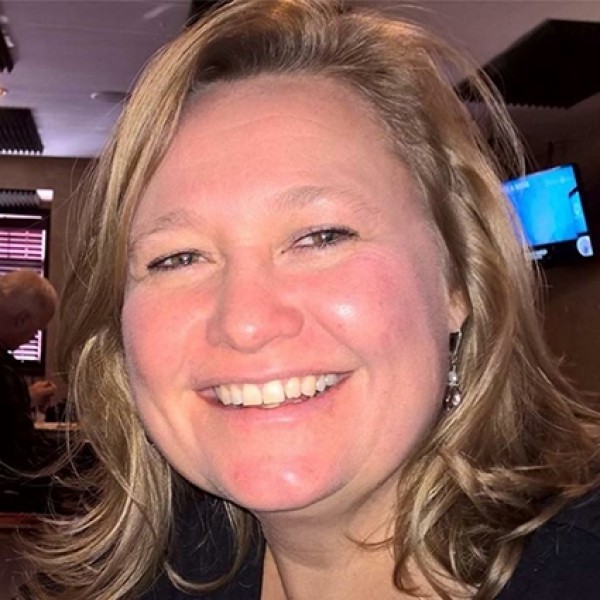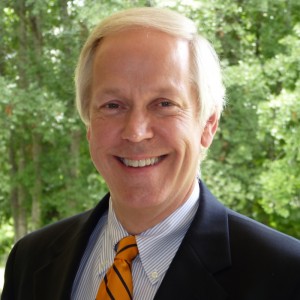By George T. Roberts, Jr., MHA, FACHE, NACCHO President and Chief Executive Officer of the Northeast Texas Public Health District
President-elect Jennifer Kertanis is the Director of Health for the Farmington Valley Health District serving a population of approximately 110,000 in ten towns west of Hartford, Connecticut. Ms. Kertanis has 30 years of public health experience serving in multiple capacities in nonprofit, state, and local public health agencies. She was appointed Director of the Farmington Valley Health District in September 2012. Prior to joining the Health District, Ms. Kertanis served for 10 years as the Executive Director of the Connecticut Association of Directors of Health (CADH), a SACCHO affiliate of NACCHO. During her tenure at CADH, she co-established the Connecticut practice-based research network and was a contributing architect of the Health Equity Index, a tool that measures the relationship between social conditions and health outcomes.
Prior to her position at CADH, Jennifer worked for 11 years with the Connecticut Department of Health in environmental epidemiology working with communities to assess the health implications of hazardous waste sites. During this time, she wrote several peer reviewed health assessments and advanced a number of health outcome studies.
Jennifer has been an active member of NACCHO for the past 18 years and has served on a number of workgroups and the Board of Directors.
Below she highlights what her health department is doing to slow the spread of COVID-19 and shares what her department needs in order for it to be successful in combatting the virus.
What is your health department doing to respond to COVID-19 and what challenges have you encountered? Successes?
Like most local health departments across the country, we’ve been tracking and monitoring cases, hospitalizations, and other indicators to really understand what is happening in our communities. We have been working with populations that have been most impacted by the illness and that includes our congregate living facilities. We’ve been involved and doing contact tracing for all of our community-based cases since the first case hit our district in early March. We’ve also been providing guidance to all of our municipalities and all of the different departments within those municipalities regarding what they need to do to keep community members safe. That includes guidance to the general public on what they need to do to protect themselves, their families, and their community members.
Some of the challenges that we’ve encountered are lack of resources. We are a small staff and I’ve had to really prioritize and shift existing staff to work almost full-time on COVID-related activities, which means other things have not been able to be prioritize. We’re contending with all of this while trying to keep our own staff safe and healthy. I think one of the biggest successes that we’ve had is establishing the health department as that key health strategist—the organization that our member towns are looking to for expertise, guidance, information, and data. There’s nothing like a pandemic to increase your visibility and stature within your communities.
In a recent article for WNPR, you mentioned that your health department has been doing contact tracing since the beginning of the epidemic with the limited resources. What does your health department need in order for its contact tracing efforts to be successful?
When we first started, probably like most health departments, and certainly as a smaller health department, it was pen and paper and EXCEL spreadsheets—we did not have any kind of existing data system that would allow us to track and monitor in a more sophisticated way. The state has provided us with a tool that is still being developed, but that has been one thing that we lacked initially. We needed to train. We have some staff that were familiar with and had done contact tracing, but we had to train additional staff. In addition to in-house resources, we continue to build a cadre of volunteers that we can turn to if we really need to expand outside of our department. We do not have funding to hire contact tracers, so we are going to have to rely on volunteers. We have talked to school nurses throughout our communities as an example of potential partners if we need to expand and they’re working to do some training. We’ll need to buy them equipment to support them in that endeavor, primarily cell phones and computers to do that work.
As the leader of a regional health district, which serves 10 towns and approximately 110,000 residents, what would you like your community to know about the work that your department is doing to keep them safe?
I would tell them that we are the best bang for their buck. For most people, we are absolutely invisible, but once you engage them in a conversation about community health we probably are one of the things that people take most for granted. We are working tirelessly during this pandemic to protect the public’s health and to put in place things that will reduce the illness in our communities and corresponding deaths. I want them to know we’re working hard, we’re invisible, and we do the kinds of things that we all take for granted. This pandemic is providing an opportunity to really showcase how important public health is, both in an emergency and every day.
Your term as NACCHO President begins July 1, 2020. How will your experience as a leader of the Farmington Valley Health District influence or inform your leadership as President?
The one thing I can say about me is that I am so incredibly passionate about public health, the work, and the value of the work that we do—that is something that carries through, whether that be in the leadership at my organization or hopefully my leadership as president of NACCHO. Because I’ve been involved in advocating for governmental local public health for so many years—both as a local health director and a SACCHO executive director for 10 years—I want to elevate the voice of us as a profession in advocating for what it is we do and why it is so important that this nation invest in a strong public health system.
What is your vision for NACCHO during your upcoming Presidential year?
This is going to be a year like none other. We are in the middle of a pandemic which will focus our efforts in ways that I could never have imaged before. We must use this opportunity to bring attention to the vital importance of a solid public health infrastructure that is adequately funded and respected. We must also focus on the systemic racial and socioeconomic inequities that are so manifest in the demographics of this pandemic. My vision for NACCHO in this upcoming year is that we use our collective voice and leverage our membership, and our stature, to advocate for the investment in a robust public health system and transform public heath practice to address health inequities.

